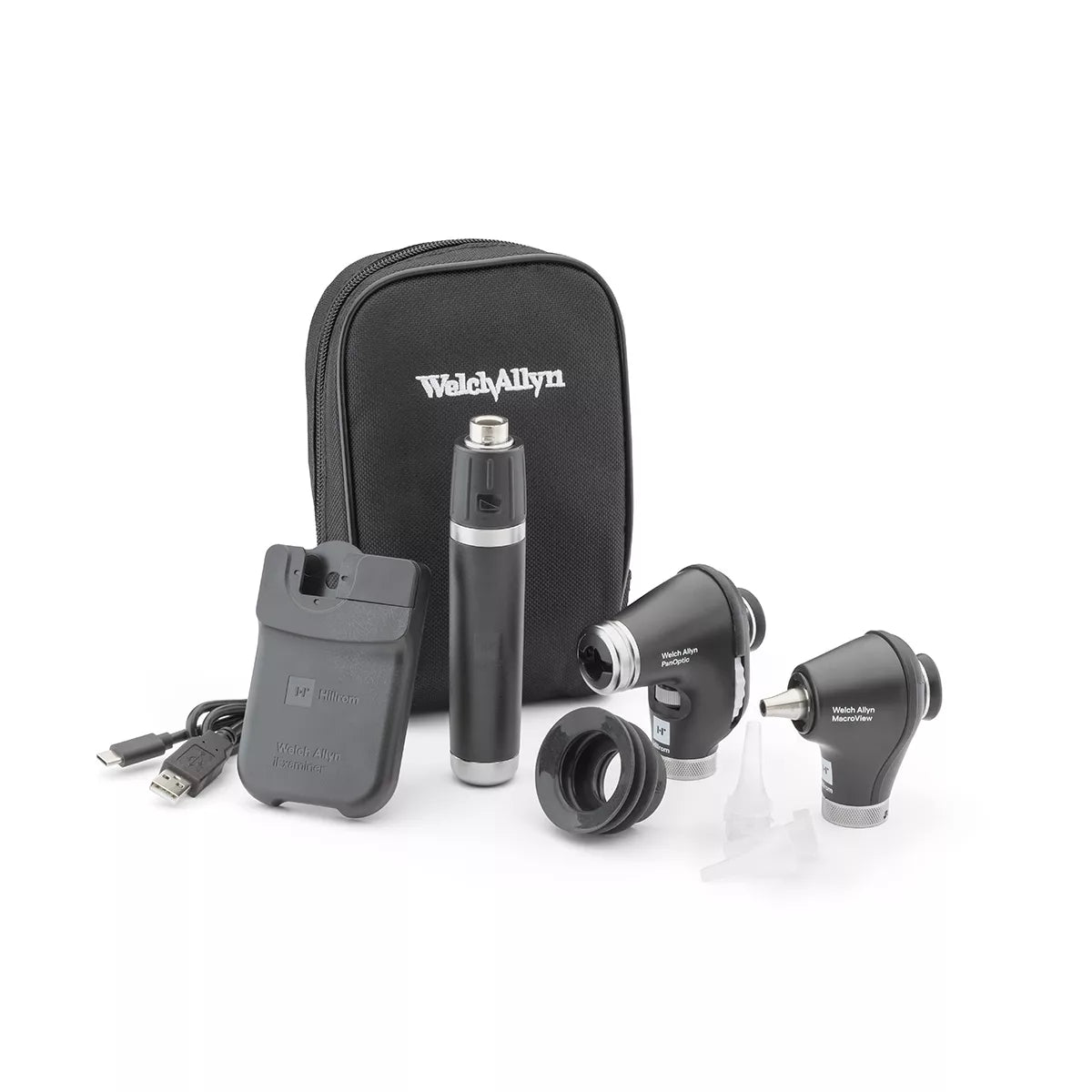
Welch Allyn 3.5V Diagnostic Set with PanOptic Plus LED Ophthalmoscope, MacroView Plus LED Otoscope for iExaminer, one Premium Lithium Ion Plus USB Rechargeable Power Handle, and soft carrying case
Welch Allyn diagnostic sets help keep the tools physicians need fast, organized and at hand to help examine the eyes, ears, nose and throat with Welch Allyn® wide-view and standard ophthalmoscopes, otoscopes and Welch Allyn retinoscopes.
This innovative wide-view optical technologies provide a larger area when viewing the optic disc and tympanic membrane.

Intended Use Welch Allyn® PanOptic™ Plus Ophthalmoscope:
The Welch Allyn PanOptic ophthalmoscopes are intended to be used by clinicians and medically qualified personnel for examination of the retina, cornea, aqueous, lens and vitreous of the eye under illumination and magnification on pediatric and adult patients.
The intended use environments for the Welch Allyn PanOptic ophthalmoscopes are professional healthcare facility environments such as general physician's offices, hospitals, specialist, urgent care, clinics, and clinical environment training.
WARNING: Patient injury risk. The light emitted from the ophthalmoscope is potentially hazardous. The longer the duration of exposure, the greater the risk of ocular damage. Exposure to light from this instrument when operated at maximum intensity will exceed the recommended maximum exposure (RME) of 2.2 J/cm2, unless additional action is taken by the user to minimize exposure, after 30 min. The risk of retinal injury at an exposure of 2.2 J/cm2 is not high, but because some patients may be more susceptible than others, caution is advised if this radiant exposure value is exceeded. However, because of a significant risk of injury at exposures exceeding 10 J/cm2, the user should avoid exposures longer than 30 min.
Intended Use Welch Allyn® MacroView™ Plus Otoscope:
The Welch Allyn MacroView and LED otoscopes are intended to be used by clinicians and medically qualified personnel for examination of the external ear, ear canal, and tympanic membrane under illumination and magnification on pediatric and adult patients. The otoscope is also intended to assess the flexibility of the tympanic membrane through air pressure and for general illumination of the oral and nasal cavities.
The intended use environments for the Welch Allyn MacroView and LED otoscopes are professional healthcare facility environments such as general physician's offices, hospitals, specialists, urgent care, clinics, and clinical environment training.
Contraindications: The Welch Allyn MacroView and LED otoscopes are not intended to be used to examine the eye.
WARNING: Patient injury risk. Do not use otoscope without attaching a specula tip as this can cause ear injury or cross-contamination.
WARNING: Cross-contamination risk. Do not reuse disposable specula tips as this may spread contamination from one patient to another patient.
Intended Use Welch Allyn® iExaminer™ Pro App:
The iExaminer application with the appropriate Welch Allyn devices is intended to be used by clinicians and medically qualified personnel to capture and send images on pediatric and adult patients.
The iExaminer System with MacroView Plus is intended to be used by clinicians and medically qualified personnel to capture and send images of the external ear, ear canal, and tympanic membrane on pediatric and adult patients.
The intended use environments for the iExaminer application and iExaminer System with MacroView Plus are professional healthcare facility environments such as general physician’s offices, hospitals, specialist, urgent care, clinics, and clinical environment training.
Use the smartphone only in environments consistent with the manufacturer’s recommendations.
There are no contraindications for the iExaminer app. See the appropriate Welch Allyn device IFU.
The iExaminer System with MacroView Plus is not intended to be used to examine the eye.
WARNING: Patient injury risk – magnetic fields. Exercise caution when using a smartphone in close proximity to implanted devices such as, but not limited to, cranial implants, adjustable CSF shunts, and pacemakers

